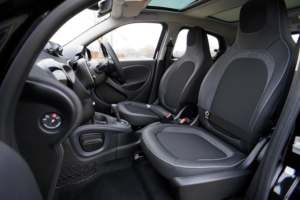
How do they perfect that new car smell?
I came across this interesting article about NASA’s odour panel who smell items before they are launched into space. The panel’s job is to ensure that overwhelming smells or toxic gases are not inadvertently introduced and recirculated within the sealed space capsule. This got me thinking about the ‘new car smell’ and the parallels in the methods the automotive industry uses to ensure that pleasant and familiar new car experience through odour testing of interior trim materials.
Did you know that there are very specific odour test methods used by car manufacturers and industry associations to make sure that ‘new car smell’ is not compromised by new products and materials used to build your car. Generally, the objective of the test is to evaluate the smell generated from the car’s interior materials during temperature and humidity conditions experienced in the environment. Specimens of interior materials (clips, armrests, door handles, sun visors, carpets, adhesives, etc) are suspended within odourless containers, typically glass jars or desiccators. The jars have a small amount of distilled water placed inside to generate humid conditions, then sealed and placed within convection ovens set at various temperatures ranging from around 20°C to a little over 100°C (it varies by method). The jars are ‘baked’ for 24 hours at lower temperatures or for two hours at higher temperatures. This allows time for odour from the specimen material to build up inside the jars.
The smells from the jars are evaluated in an odour-free environment by specially selected odour assessors who don’t smoke heavily, wear perfume, chew gum or have sinus problems, and don’t work in vehicle production facilities. The lid of each jar is removed briefly with the smell wafted towards each assessor’s nose. Each assessor records their rating based on the strength of the smell and how tolerable or intolerable it is in the context of the new car smell. The testing can be repeated a few times on each jar. The assessors’ ratings are averaged for each jar and are used to determine the overall suitability of interior materials for installation into a new vehicle.
The Ford Motor Company has also developed a method to test the air quality of odour within a fully fitted out vehicle interior. It involves completely boiling one litre of distilled water within the vehicle. After a ten-minute wait, odour assessors – one for each door – enter the vehicle and rate the smell. Then, the interior is dried with hot air for one hour and heated to 60°C. The odour assessors re-enter the vehicle and record another smell rating.
So there you have it, the odour science used to ensure a healthy and comfortable environment for NASA’s astronauts in space is also used to ensure a pleasant experience every time you jump into a brand new car.
By Andrew Balch
References and resources:
- Chemistry World, 2018. The man who sniffs spacecraft. [Online]
Available at: https://www.chemistryworld.com/careers/the-man-who-sniffs-spacecraft/3009611.article - Ford Motor Company, 2000. Ford Laboratory Test Method B 131-01 Determination and assessment of odor from interior trim materials/components/assemblies, s.l.: Ford Global Technologies.
- Ford Motor Company, 2001. Ford Laboratory Test Method B 131-02 Determination of odor in a completely equipped vehicle, s.l.: Ford Global Technologies.
- Ford Motor Company, 2014. Ford Laboratory Test Method B 131-03 Interior odour test, s.l.: Ford Global Technologies.
- General Motors Company, 2011. Test Procedure GMW3205 Determining the Resistance to Odor Propagation of Interior Materials, s.l.: General Motors Company.
- German Association of the Automotive Industry [VDA], 2018. VDA 270 Determination of the odour characteristics of trim materials in motor vehicles. [Online]
Available at: https://www.vda.de/en/services/Publications/vda-270-determination-of-the-odour-characteristics.html - Volkswagen AG, 2000. PV 3900 Components in Passenger Compartment Odor Test, s.l.: Volkswagen AG.











